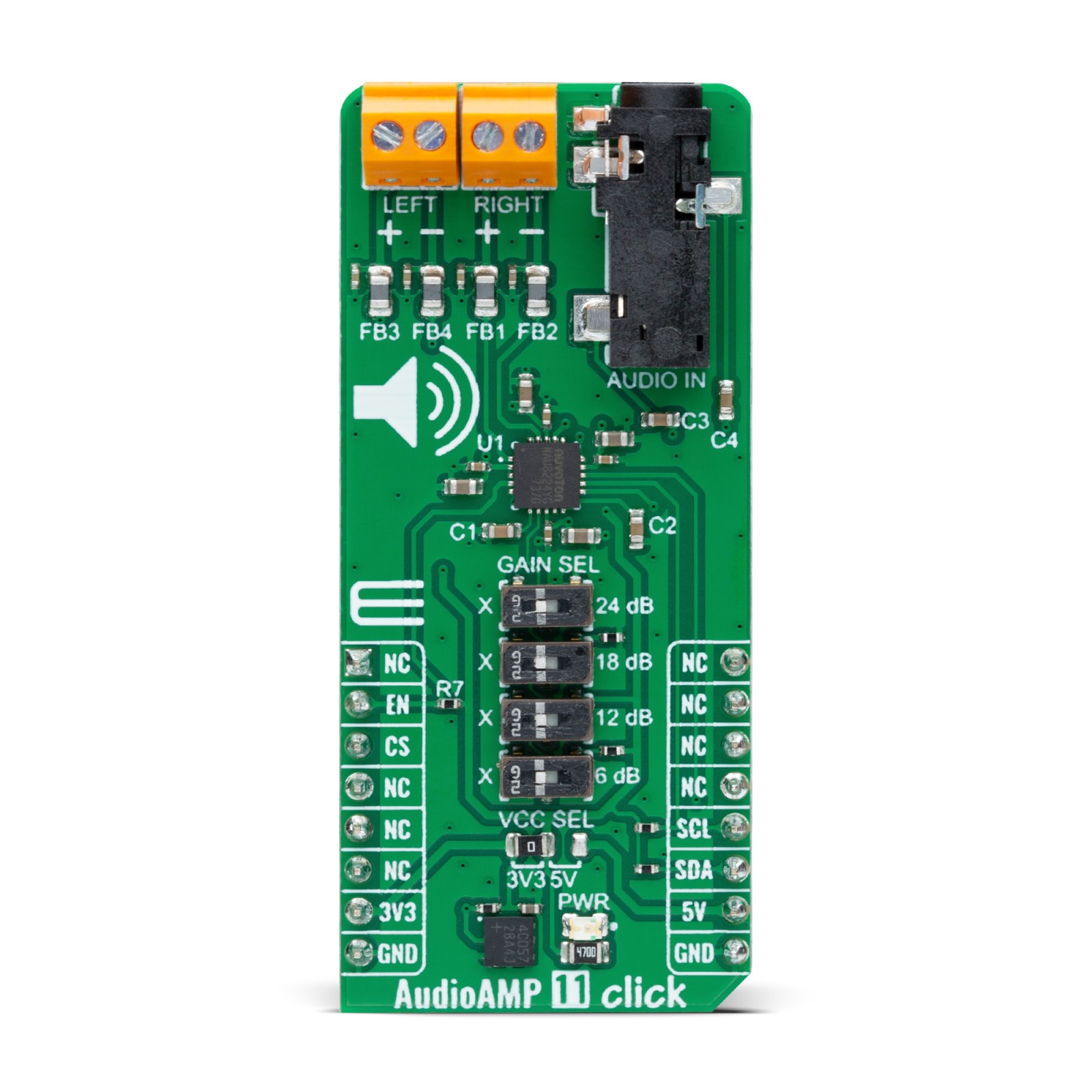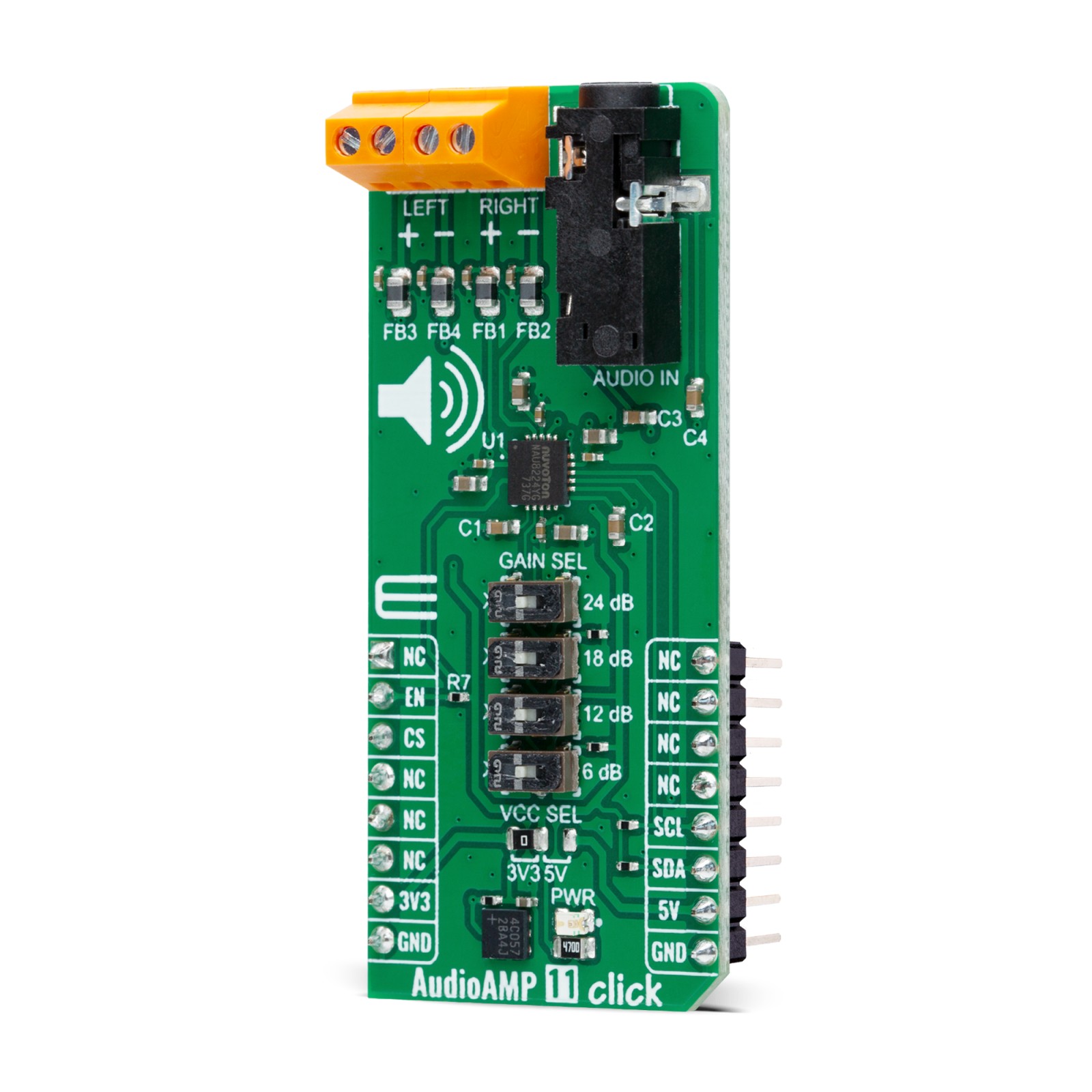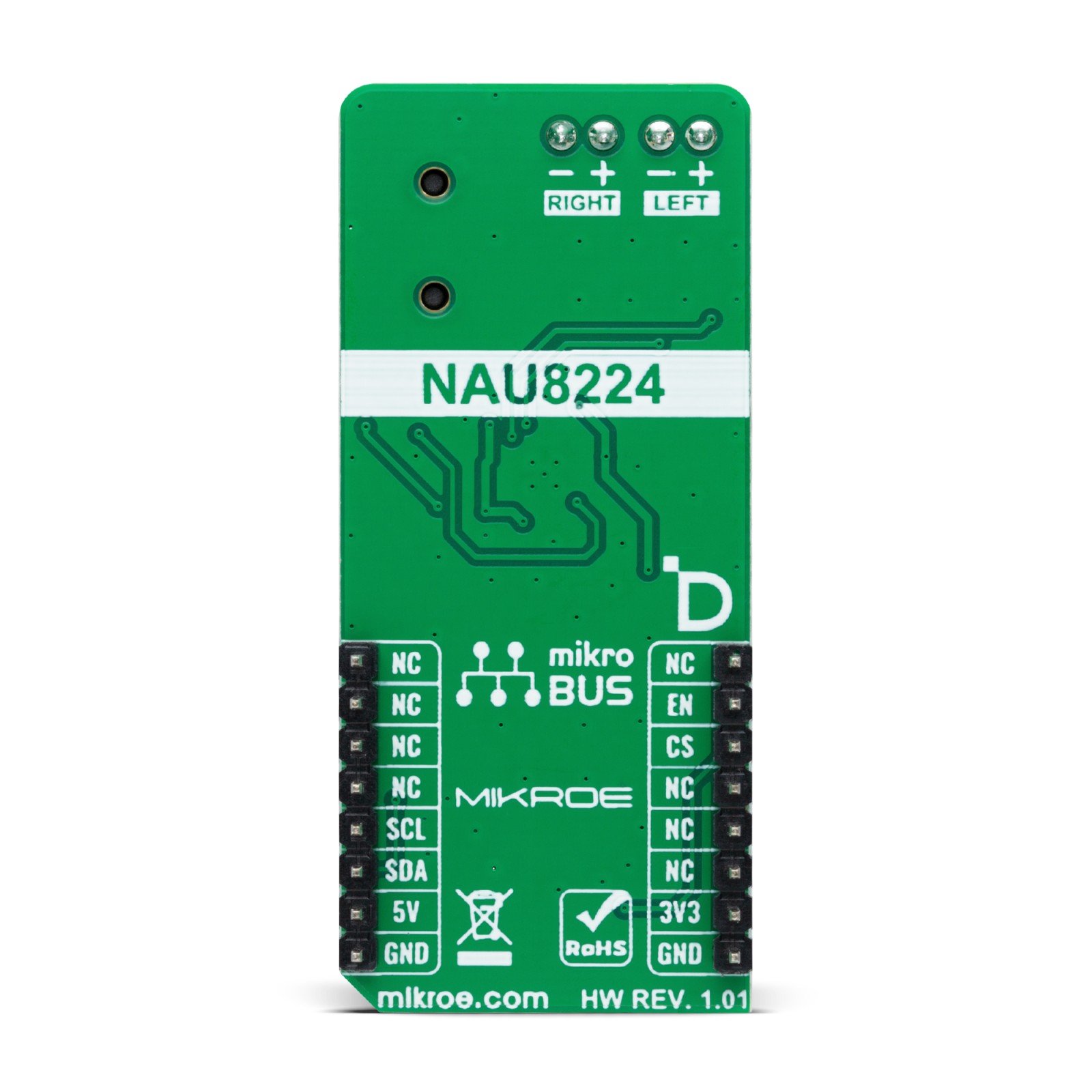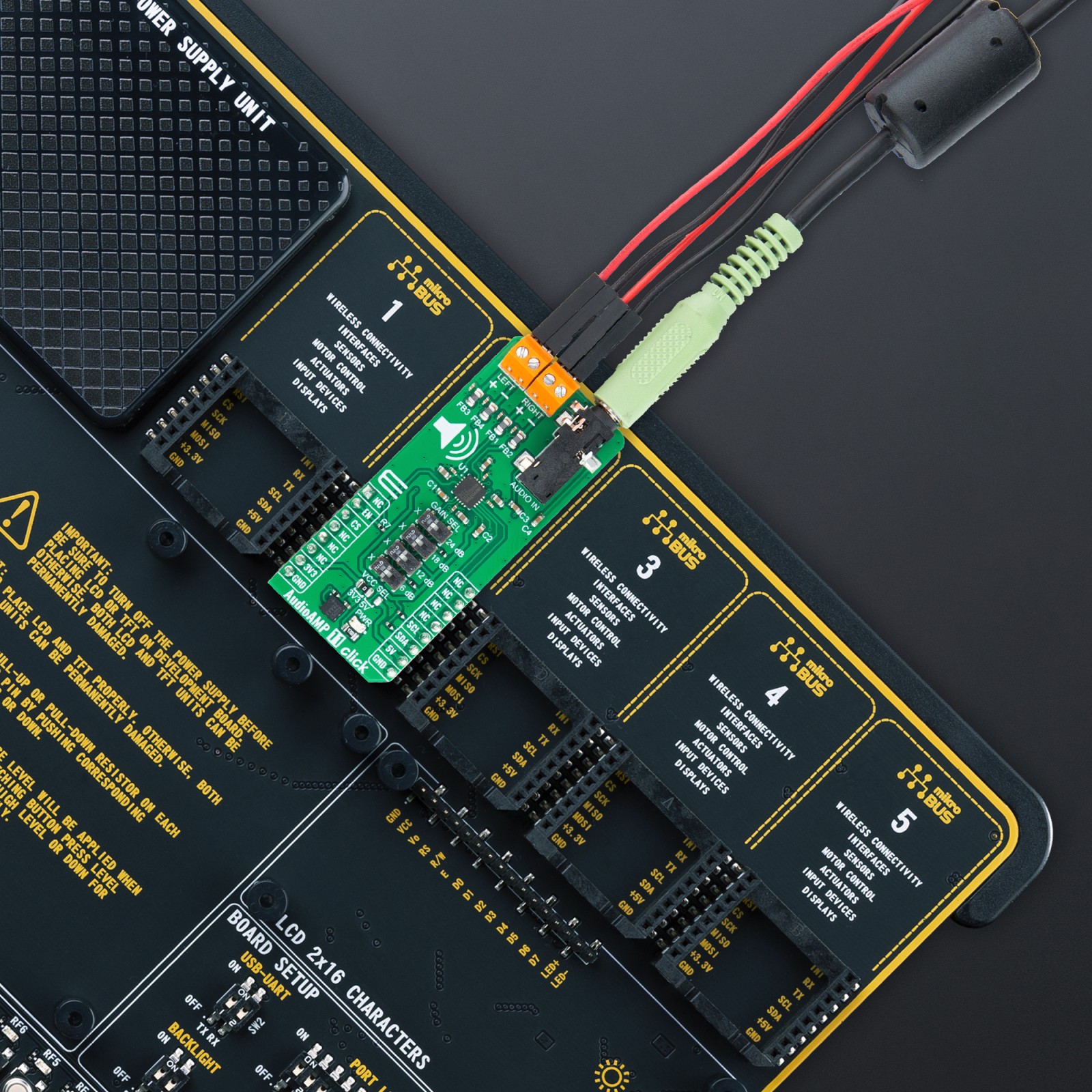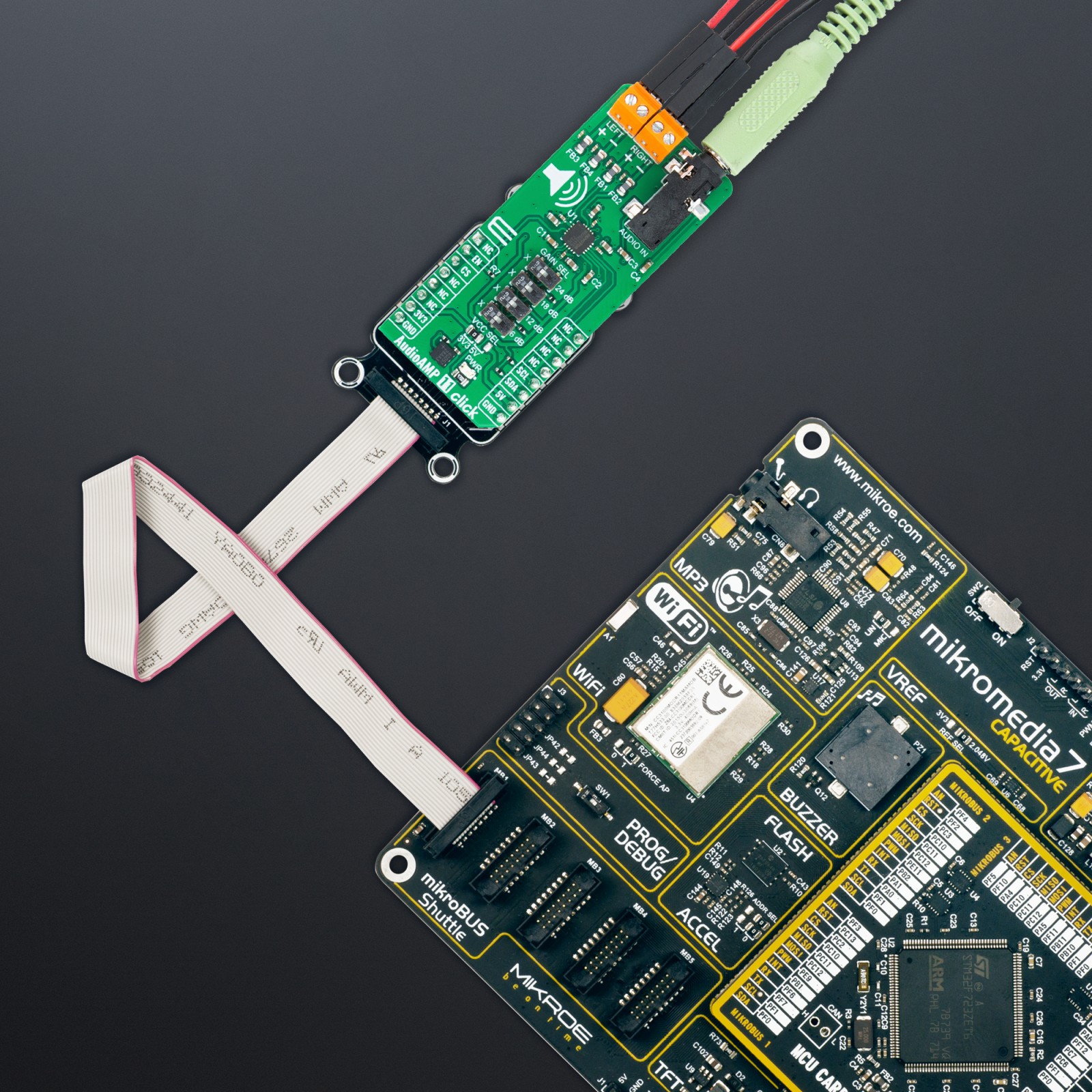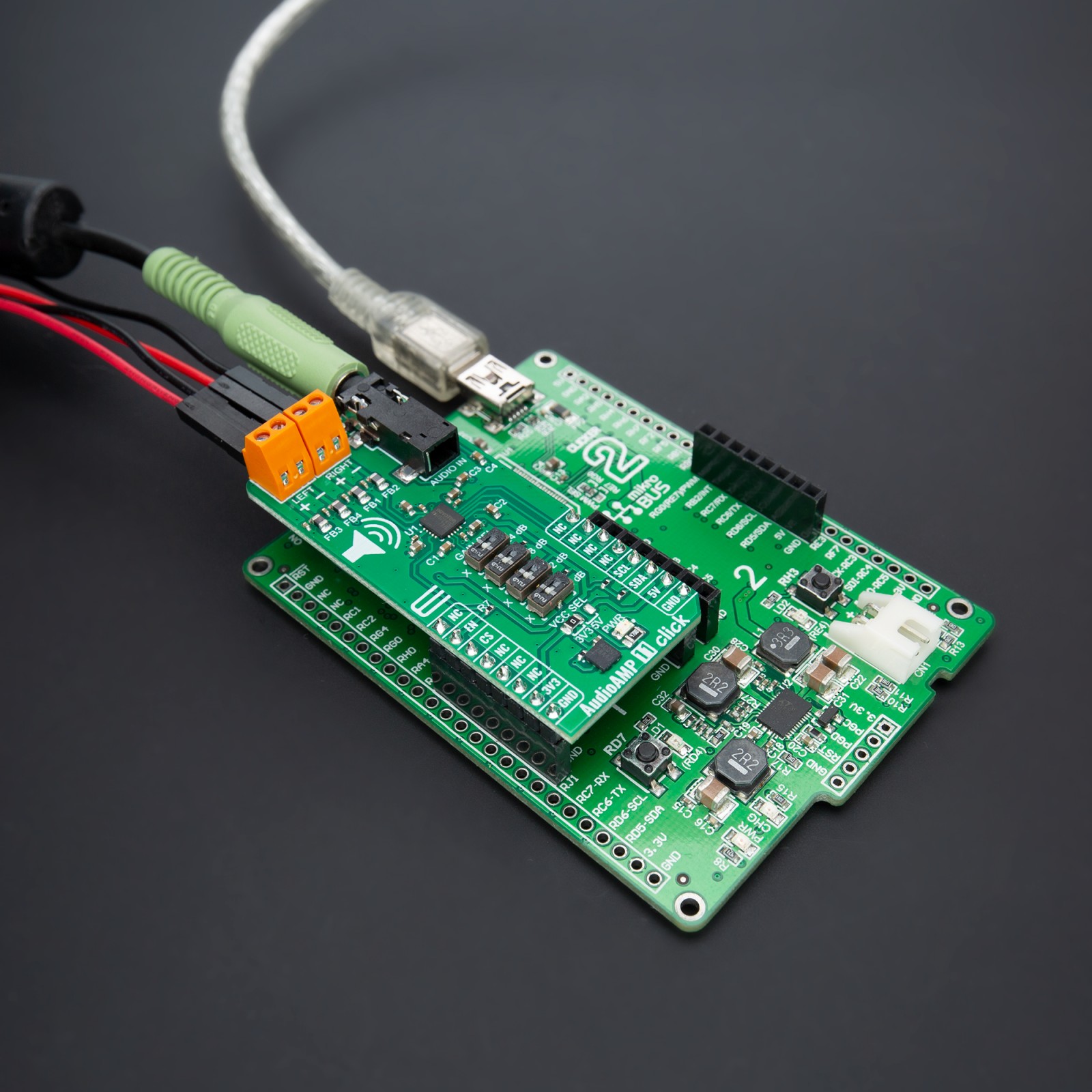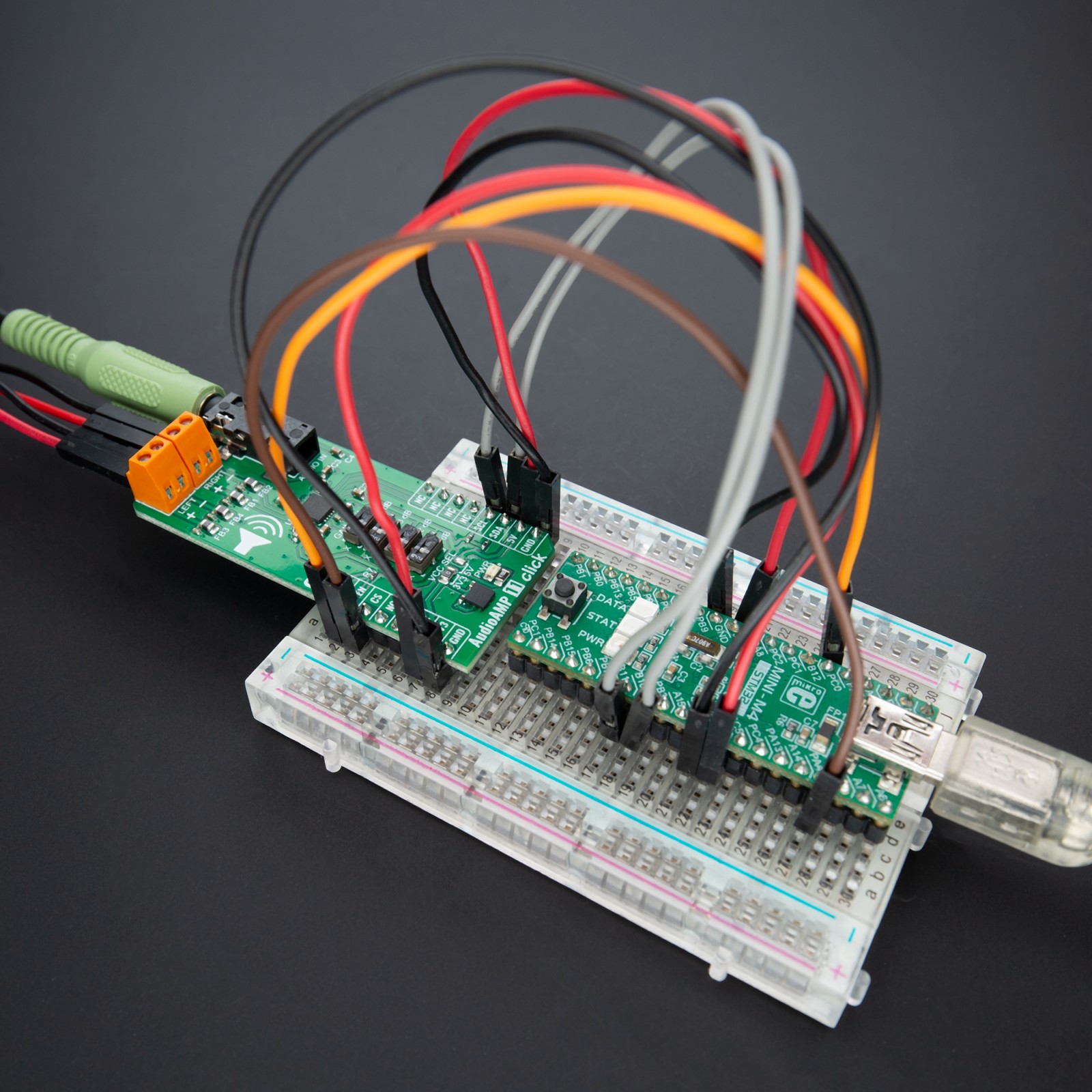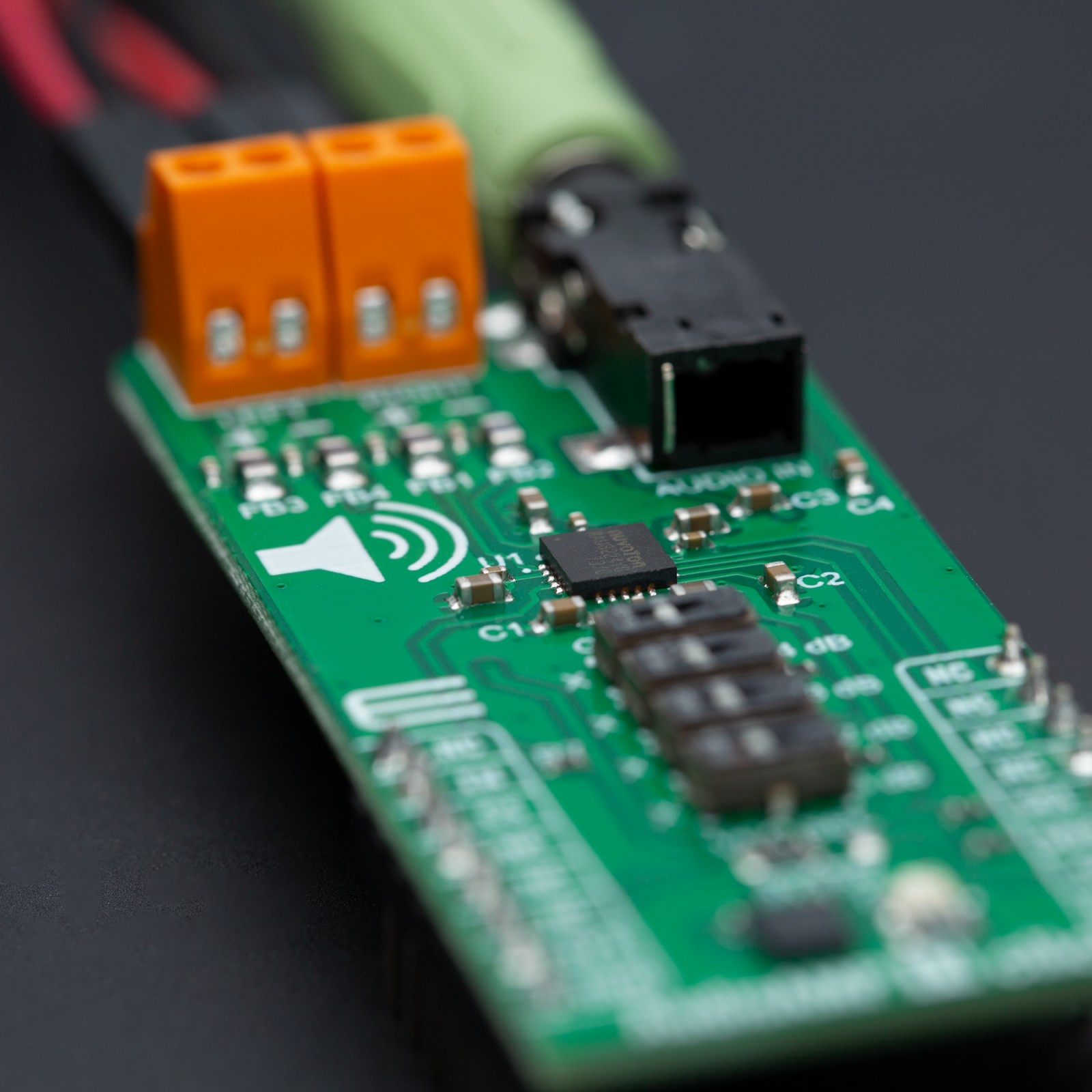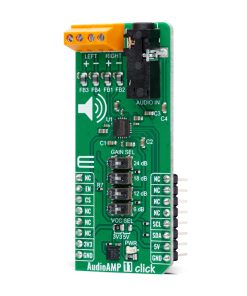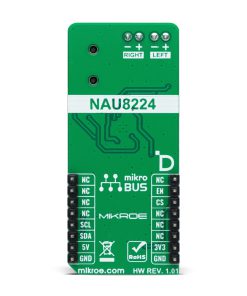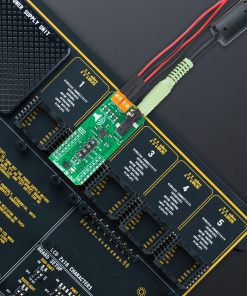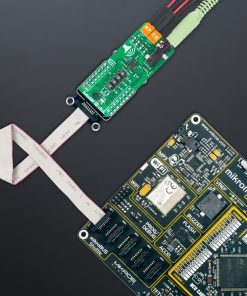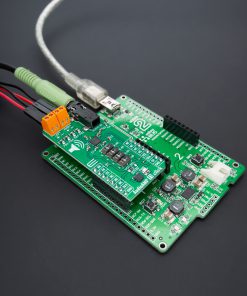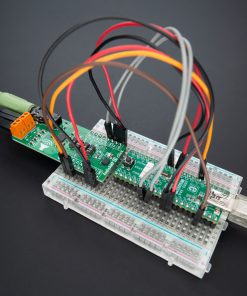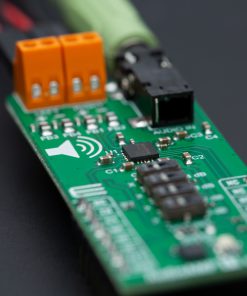AudioAMP 11 Click
R425.00 ex. VAT
AudioAMP 11 Click is a compact add-on board suitable for reproducing input audio signals with the desired level of volume and power on the output elements that produce sound. This board features the NAU8224, a high-performance stereo Class-D audio amplifier from Nuvoton Technology. This flexible I2C configurable audio amplifier can drive a 4Ω load with up to 3.1W output power. In addition to the possibility of digital control (using only one enable pin), the NAU8224 also has many useful gain settings from 6dB to 24dB. Besides, it is equipped with protection features, allowing a reliable operation. This Click board™ is suited for various types of consumer audio equipment applications.
AudioAMP 11 Click is fully compatible with the mikroBUS™ socket and can be used on any host system supporting the mikroBUS™ standard. It comes with the mikroSDK open-source libraries, offering unparalleled flexibility for evaluation and customization. What sets this Click board™ apart is the groundbreaking ClickID feature, enabling your host system to seamlessly and automatically detect and identify this add-on board.
Stock: Lead-time applicable.
| 5+ | R403.75 |
| 10+ | R382.50 |
| 15+ | R361.25 |
| 20+ | R347.65 |

